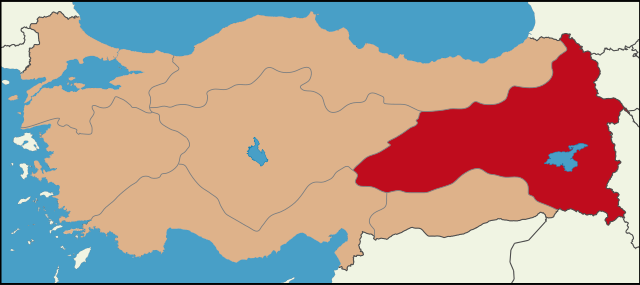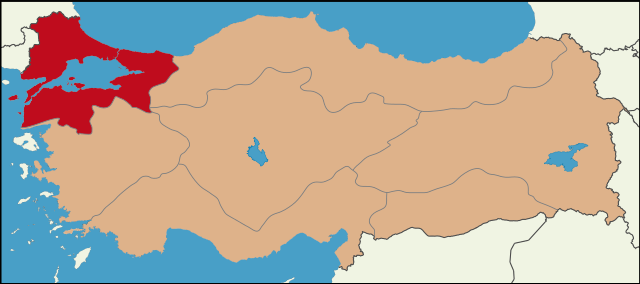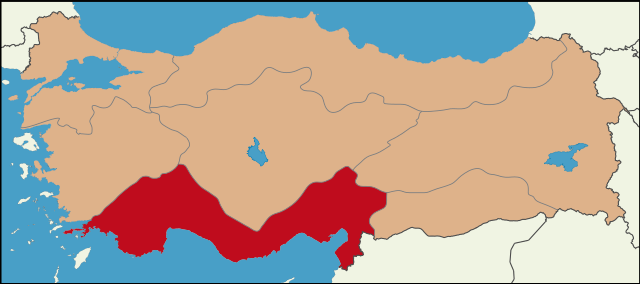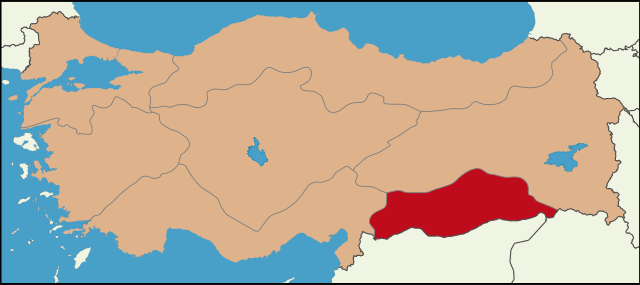Geographical_regions_of_Turkey
Geographical regions of Turkey
Overview of the regions of Turkey
The geographical regions of Turkey comprise seven regions (Turkish: bölge), which were originally defined at the country's First Geography Congress in 1941.[1] The regions are subdivided into 31 sections (Turkish: bölüm), which are further divided into numerous areas (Turkish: yöre), as defined by microclimates and bounded by local geographic formations.
- Marmara Region (dark green)
- Black Sea Region (light green)
- Aegean Region (blue)
- Mediterranean Region (purple)
- Central Anatolia Region (brown)
- Eastern Anatolia Region (orange)
- Southeastern Anatolia Region (yellow)
"Regions" as defined in this context are merely for geographic, demographic, and economic purposes and do not refer to an administrative division.






